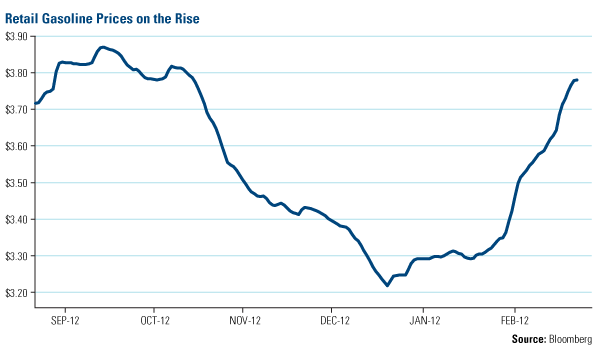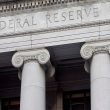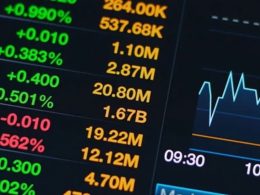The Economy and Bond Market Radar (February 24, 2013)
Treasury bond yields fell modestly this week as economic news was mixed and the biggest story of the week was the Fed minutes from the January 29-30 meeting which indicated concerns with the current pace and magnitude of the Fed’s QE program. While some commentators came to the conclusion that the Fed could stop or reduce its QE program as early as the March 20 meeting, the chart below argues against it. The chart depicts retail gasoline prices which have risen almost 15 percent just this year. Adding the economic drag of higher gasoline prices to the uncertainty surrounding the pending sequestration and other political risks, it appears unlikely the Fed will reverse policy so soon after implementing it. Continued low inflation and high unemployment also add to the argument against curtailing the QE program.

Strengths
- Inflation remains low with both the Producer Price Index (PPI) and Consumer Price Index (CPI) being reported this week. Year-over-year PPI rose 1.4 percent while CPI rose 1.6 percent.
- The Conference Board U.S. Leading Index rose 0.2 percent in January indicating continued economic expansion.
- Headline housing data was mixed, but under the surface the trend continues to look positive as new permits hit the highest level in more than four years.
Weaknesses
- Gasoline prices hit a four-month high and act to slowdown the economy.
- Several Fed policymakers expressed concerns about the risks of the existing QE program, causing the market to question the Fed’s resolve.
- The Philadelphia Fed Index unexpectedly declined in February and is the worst reading since June.
Opportunity
- While some Fed members expressed concerns over continued quantitative easing, the Fed still remains committed to an extremely accommodative policy until the economy improves.
- With the stock market struggling some this week, investors appetite for fixed income may return.
Threat
- The economy appears to be gaining momentum and bonds have sold off; the risk for bondholders is that this trend continues.
- Inflation in some corners of the globe is getting the attention of policymakers and may be an early indicator for the rest of the world.













